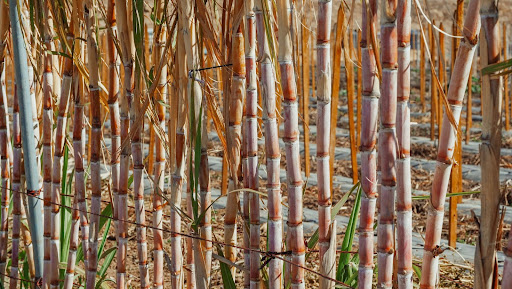Discover the Uses and Benefits of Beet Sugar Vs Cane Sugar in Your Daily Diet
Checking out the unique qualities of beet and cane sugar reveals even more than simply their sweetening capabilities; it highlights their unique effect on health and wellness and cookeries. Beet sugar, understood for its subtle flavor, is frequently favored in delicate desserts, whereas cane sugar, with its hint of molasses, includes richness to durable dishes. Each type holds its own nutritional profile and glycemic ramifications, inviting a deeper understanding of their functions in a well balanced diet and lasting intake techniques.
Beginning and Manufacturing Procedures of Beet and Cane Sugar

The distinct environments and dirt types required for expanding sugar beets and sugarcane add to distinctions in their farming methods and geographical circulation, affecting the economics and sustainability of their production. beet sugar vs cane sugar.
Nutritional Contrast Between Beet Sugar and Cane Sugar
In spite of originating from different plants, beet sugar and cane sugar are nutritionally very similar, both primarily consisting of sucrose. Each offers regarding 4 calories per gram, equating to about 16 calories per tsp. Structurally, both sugars are made up of roughly 99.95% sucrose, with very little amounts of various other substances like moisture and trace minerals, which do not substantially change their dietary accounts.

Inevitably, when selecting in between beet sugar and cane sugar based on dietary web content alone, both deal identical advantages and drawbacks as they are essentially types of the very same particle-- sucrose, giving quick power without various other nutrients.
Influence on Wellness: Glycemic Index and Caloric Material
Discovering further into the impacts of beet sugar and cane sugar on wellness, it is essential to consider their glycemic index and caloric content. Both sugars are identified as sucrose, which contains glucose and fructose. This structure leads them to have a similar influence on blood sugar degrees. The glycemic index (GI) of both beet and cane sugar is around 65, categorizing them as high-GI foods, which can cause quick spikes in blood sugar degrees. This is a vital facet for individuals taking care of diabetes mellitus or those attempting to maintain their energy degrees throughout the day.
Each kind of sugar includes about 4 calories per gram, making their calorie material matching. For those monitoring caloric intake, specifically when handling weight or metabolic health problems, comprehending this equivalence is crucial (beet sugar vs cane sugar). Nonetheless, too much intake of resource any kind of high-calorie, high-GI food can contribute to health issues such as excessive weight, heart disease, and insulin resistance.
Environmental and Economic Factors To Consider of Sugar Production
Beyond health influences, the production of beet and cane sugar likewise raises substantial ecological and economic worries. Sugar beet farming has a tendency to need cooler climates and has a reduced geographical impact contrasted to sugar cane, which prospers in tropical areas. Nonetheless, both crops are extensive in terms of water usage and land line of work, potentially leading to deforestation and water shortage. Financially, the international sugar market is very unpredictable, affected by adjustments in international profession policies and aids. Several countries incentivize sugar manufacturing through financial backing, skewing market value and influencing small-scale farmers negatively.
Furthermore, the use of pesticides and plant foods in both beet and cane sugar growing can bring about dirt destruction and pollution, additional influencing biodiversity and neighborhood water bodies (beet sugar vs cane sugar). The selection between growing sugar beet or cane often rests on regional ecological problems and economic variables, making the sustainability of sugar additional hints manufacturing a complicated problem
Culinary Applications and Taste Distinctions
While the ecological and financial aspects of sugar manufacturing are without a doubt considerable, the option in between beet and cane sugar likewise influences culinary applications and flavor profiles. Beet sugar, obtained from the sugar beet plant, is understood for its extremely neutral preference.
Walking stick sugar, extracted from sugarcane, commonly retains molasses traces, which impart a distinct richness and deepness. This mild molasses taste enhances the intricacy of baked items, sauces, and marinates. It is especially preferred in products where a caramel touch is preferred, such as in brownies or gingerbread. The small variation in wetness material between beet and cane sugar can affect the texture and uniformity of recipes, making cane sugar a preferred option for certain dishes that profit from its unique residential properties.

Final Thought
To conclude, both beet and cane sugar have distinctive beginnings and manufacturing procedures, using comparable dietary accounts with small distinctions in sodium content and taste. While their influence on health and wellness, especially relating to glycemic index view website and calories, is similar, the option between them typically comes down to environmental, financial aspects, and specific culinary requirements. Comprehending these aspects can direct consumers in making notified decisions that line up with their wellness objectives and flavor choices.